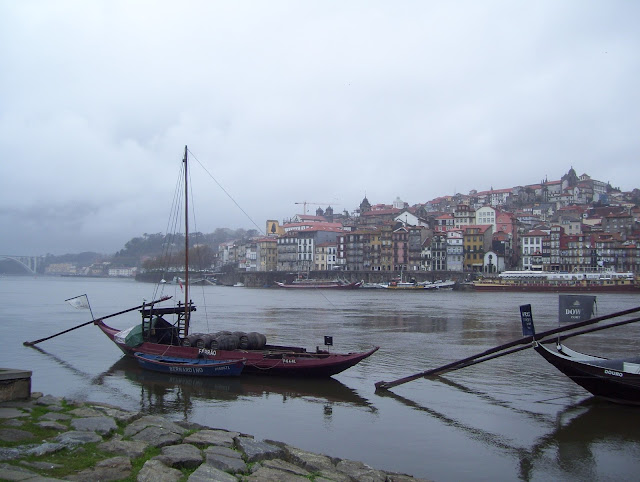Anyway, we were relatively lucky as far as weather was concerned for our trip to Castilla-León. I even bought, used and appreciated a 12€ bottle of sunscreen.
The five of us (fellow auxilars Meg, Ryan, and Julia, and Julia's bro Mike) met at the bus station and bussed to León. We grabbed some food at a Corte Inglés, ate lunch in a park (where we got stared at by Spaniards) and got lost on the way to the piso* we had rented for the weekend.
The directions to the flat were essentially as follows: Take X street to Y street, make a right on Y, then follow Y to the roundabout, take the pedestrian street off the roundabout, walk until you see a pine tree and make another right, and the building is on the left.
Things got complicated when we left X street to find Corte Inglés and have lunch in a park. There was much consulting of maps and asking of directions during our quest.
Long story short, we found the flat, which was super cute.
 |
| The pine tree in question |
 |
After dropping off our stuff and assembling a game plan of sorts (1. go to the center 2. eat?) we set out again.
 |
| Walking down the Calle Ancha (widestreet) of the old town |
In León, like in a lot of other cities I've seen, the cathedral is one of the biggest and most impressive things to go see. And this one was pretty cool.
 |
| First view of the Cathedral |
We debated for a while whether it was worth the four euros to go in or not. Four out of five tourists agreed: yes, it was.
After the cathedral, we did some more wandering around with the goals of 1. finding the plaza mayor, 2. not walking down the same street twice. Here's some photos.
We found it! It took a lot longer (and more stops at bars) than we had originally anticipated, but we did find it.
And then we went back to all the sights to see them all lit up at night.
The next day we took a walk by the river, via a huge street market full of cheap junk, a jungle-gym, and the bus station. At the end of our walk, we came across a stone bridge and some kind of palace.
The palace had a couple of different motifs on it--conch shells (for the Camino de Santiago. The French Way passes through León) and the two-headed eagle (which represents, among other things, the Hapsburgs), which gives a taste of the depth and complexity of history in Spain. Really, my one quarter of Spanish History painted only a broad, vague picture starting with the celtiberos and ending with post-Franco modernization, glazing over a lot of the bits inbetween. I asked one of the teachers at my school if León had been the capital of its own kingdom at some point, and ended up getting a (well appreciated) mini lecture on the Knights Templar.
The palace is now part-hotel and part-church. The hotel part (five stars) is not enterable as a regular tourist (guests only) and the church part was having a service (it was sunday), so we admired it from outside.
After some bus station croissants and a fifty-minute ride (in a bus) we found ourselves in Astorga.
Immediately across from the Astorga bus station there are two amazing, monumental buildings, each trying to out-monument the other. One is the cathedral, and the other is the Palacio de Gaudi.
And of course there were some roman ruins and an old, possibly roman wall, which seems to have been built for gazing introspectively into the distance.
And then we went back to all the sights to see them all lit up at night.
 |
The next day we took a walk by the river, via a huge street market full of cheap junk, a jungle-gym, and the bus station. At the end of our walk, we came across a stone bridge and some kind of palace.
The palace had a couple of different motifs on it--conch shells (for the Camino de Santiago. The French Way passes through León) and the two-headed eagle (which represents, among other things, the Hapsburgs), which gives a taste of the depth and complexity of history in Spain. Really, my one quarter of Spanish History painted only a broad, vague picture starting with the celtiberos and ending with post-Franco modernization, glazing over a lot of the bits inbetween. I asked one of the teachers at my school if León had been the capital of its own kingdom at some point, and ended up getting a (well appreciated) mini lecture on the Knights Templar.
The palace is now part-hotel and part-church. The hotel part (five stars) is not enterable as a regular tourist (guests only) and the church part was having a service (it was sunday), so we admired it from outside.
After some bus station croissants and a fifty-minute ride (in a bus) we found ourselves in Astorga.
Immediately across from the Astorga bus station there are two amazing, monumental buildings, each trying to out-monument the other. One is the cathedral, and the other is the Palacio de Gaudi.
 |
| One of two Gaudi designs not living in Barcelona |













































